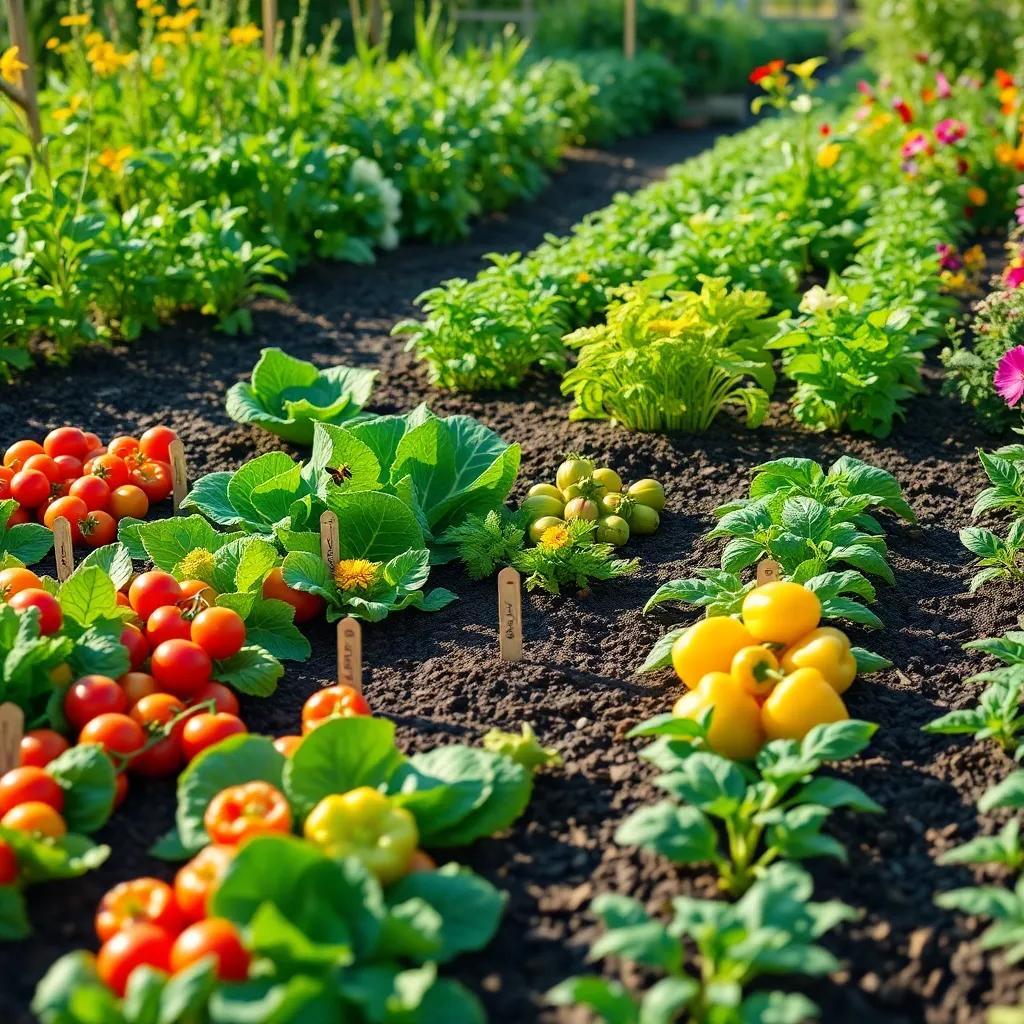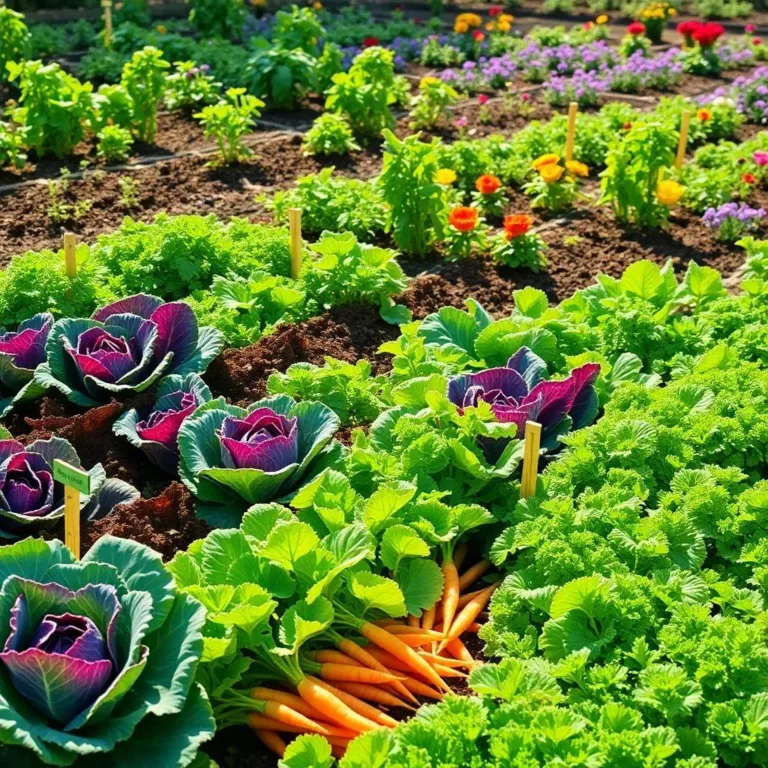Are you ready to boost your gardening game? Understanding how to include a botanical family in your crop rotation can turn your garden into a bustling paradise of health and productivity! Join me as we explore the exciting world of plant families, their benefits, and practical strategies to make your garden thrive—let’s dig in!
Definition and Importance of Botanical Families in Gardening
When we dig into gardening, one term you’ll often hear is botanical family. But what does that really mean? Well, a botanical family is a group of plants that share similar traits. Think of it as a family reunion for plants! They often have common characteristics like flower shapes, leaf types, and even their needs for nutrients. For example, tomatoes, peppers, and eggplants all belong to the Solanaceae family. Isn’t that cool?
Understanding these families helps me make smarter choices when planning my garden. When I group plants together based on their families, I can maximize growth and health! Here’s why this matters:
- Common Traits: Plants in the same family tend to have similar needs when it comes to nutrients and care. This means I can plan my gardening schedule and soil amendments more effectively.
- Pest Awareness: Knowing the family helps me identify potential pests and diseases. If I plant too many members of the same family in one spot, I could end up with a pest party!
- Crop Rotation Planning: Rotating plants from different families lets my soil rest and keeps it healthy. It’s like giving the soil a little vacation!
So, when I’m planning my garden, I keep these families in mind. Doing so helps my plants thrive and keeps my gardening experience enjoyable!
Benefits of Crop Rotation with Botanical Families
Alright, let’s chat about why crop rotation is the gardener’s best buddy! I can hear you asking, “Why should I care about rotating my crops?” Well, let me tell you, there are some fantastic benefits!
First off, pest control. By rotating plants from different botanical families, I throw pests off their game. They get confused and can’t find their favorite snacks! This means fewer pests buzzing around and munching on my hard work.
Then there’s nutrient management. Each plant pulls different nutrients from the soil. When I switch them up, I avoid stripping the soil of one type of nutrient. It’s like giving my soil a balanced diet! Here are some of the key benefits:
- Improved Soil Health: Different plants contribute to better soil structure and microbial activity. This keeps my soil alive and kicking!
- Weed Reduction: Certain crops can overshadow weeds, making it tougher for them to grow. Bye-bye, pesky weeds!
- Higher Yields: Healthier soil and fewer pests mean I get to enjoy larger and more delicious harvests! Yum!
Incorporating crop rotation into my gardening routine has made a world of difference. I feel like a superhero for my soil! Plus, it makes gardening even more fun and engaging! So, are you ready to give crop rotation a try? I know I am!

Challenges in Including a Botanical Family in Crop Rotation
While including a botanical family in my crop rotation sounds great, it does come with its own set of challenges! Sometimes, I feel like I’m trying to solve a puzzle with missing pieces. Here are some common hurdles I’ve encountered, along with tips to overcome them!
- Pest and Disease Persistence:
Plants in the same botanical family often attract the same pests and diseases. If I plant too many of them together, I might invite unwanted guests to my garden party! To tackle this, I keep a close eye on what’s been planted in previous seasons. Rotating with non-related plants helps break the cycle of pests, making it harder for them to find their favorite dish!
- Nutrient Imbalances:
Different plants have unique nutrient needs. If I keep planting crops from the same family, the soil can become unbalanced. For example, if I grow tomatoes year after year, I may deplete specific nutrients. I’ve learned to mix in cover crops like clover or vetch, which can help restore balance while adding those nutrients back into the soil!
- Limited Crop Options:
Focusing on one botanical family might narrow my choices. Sometimes I want to get creative and try new recipes in the garden! If space is tight, I prioritize the key crops from that family while still including a variety of others. This allows for diversity while sticking to the family plan.
- Increased Management Requirements:
Different members of a botanical family can have varying needs! Some might require more water, while others thrive in drier conditions. I’ve had to do a little extra research and planning to make sure all my plants have what they need to thrive.
Yes, there are challenges, but with a bit of planning and awareness, I can still enjoy all the benefits that come from including a botanical family in my crop rotation!
Effective Strategies for Rotating Botanical Families
Now that we’ve talked about the challenges, let’s jump into some effective strategies for rotating botanical families! I’ve found these tips help keep my garden healthy and thriving while making gardening more fun!
- Extended Rotation:
Instead of planting the same family every year, I like to extend the rotation period! For example, if I plant tomatoes, I might wait two or three years before planting another round of them in the same spot. This breaks up the cycle of pests and allows the soil to recover.
- Intercropping:
This strategy involves planting different crops from the same botanical family alongside unrelated plants. For instance, I can plant peppers next to carrots. This not only saves space but also confuses pests who might be targeting my peppers. Plus, I get to enjoy a colorful garden!
- Trap Cropping:
I’ve found that using trap crops can save the day! These are plants that attract pests away from my main crops. For example, I might plant marigolds next to my cucumbers. The pests love marigolds, which keeps them away from munching on my delicious veggies!
- Green Manure Cover Crops:
Incorporating cover crops can enhance soil health and replenish nutrients. After harvesting my main crops, I plant legumes like clover or peas. These help fix nitrogen in the soil, making it ready for the next planting season!
- Diverse Crop Choices:
The more variety, the better! I try to mix it up by including plants from various botanical families. It keeps my garden interesting and helps maintain balances in nutrients and pests. I feel like a mad scientist experimenting with different combinations!
By using these strategies, I can embrace the challenges of crop rotation and keep my garden flourishing. Happy gardening, everyone!
Practical Example of a Crop Rotation Plan with Botanical Families
Let’s get practical! Here’s a simple crop rotation plan I’ve used that focuses on the Brassicaceae family, which includes tasty veggies like broccoli, cabbage, and kale. Ready? Here we go!
Year 1:
- Plant: Broccoli
- After Harvest: Incorporate a cover crop like clover to fix nitrogen in the soil. This not only adds nutrients back but also helps prevent weeds!
Year 2:
- Plant: Cabbage in a different area.
- After Harvest: After I harvest the cabbage, it’s smart to add a green manure cover crop, such as winter rye. This enriches the soil over the winter months!
Year 3:
- Plant: A non-related crop like tomatoes in the cabbage spot.
- After Harvest: Once I’ve harvested the tomatoes, I follow up with another leguminous cover crop to keep that nitrogen flowing into the soil.
Year 4:
- Plant: Return to the original broccoli area and sow kale.
- Why? By now, the pests and diseases that enjoyed the first two years have had their fill! The kale can thrive with less competition.
This four-year plan allows me to incorporate a botanical family while also introducing diversity into my garden! By adding unrelated crops between the rotations, I’m reducing the risk of disease and helping the soil stay healthy. It feels good to know I’m taking care of my garden while enjoying bountiful harvests!
Remember, this is just an example. Feel free to mix and match based on your space and favorite crops. Happy planting!

